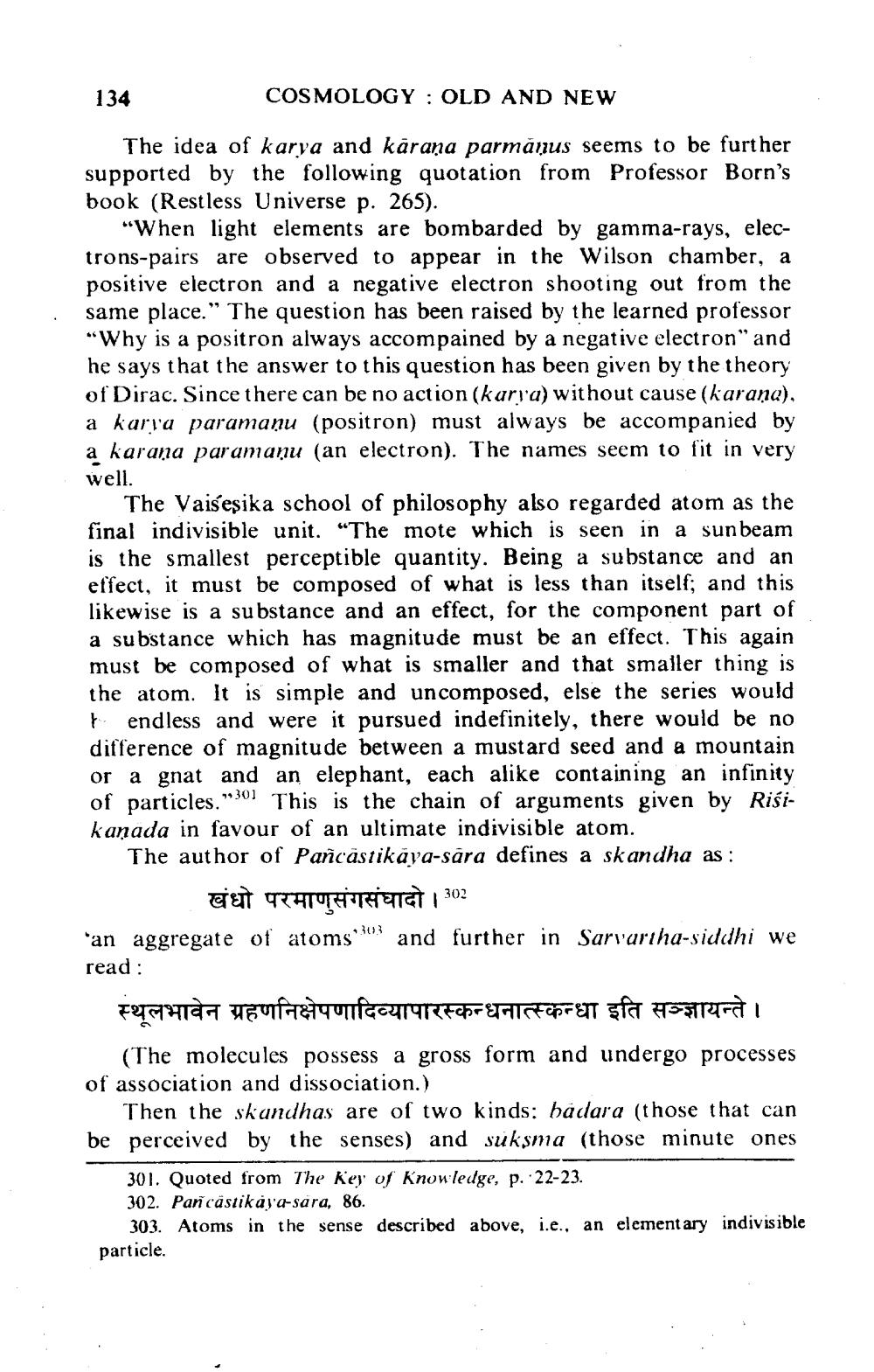________________
134
COSMOLOGY : OLD AND NEW
The idea of karya and kāraṇa parmăņus seems to be further supported by the following quotation from Professor Born's book (Restless Universe p. 265).
"When light elements are bombarded by gamma-rays, electrons-pairs are observed to appear in the Wilson chamber, a positive electron and a negative electron shooting out from the same place." The question has been raised by the learned professor "Why is a positron always accompained by a negative electron" and he says that the answer to this question has been given by the theory of Dirac. Since there can be no action (karra) without cause (karana), a karla paramaņu (positron) must always be accompanied by a karana paramaņu (an electron). The names seem to fit in very well.
The Vaisesika school of philosophy also regarded atom as the final indivisible unit. "The mote which is seen in a sunbeam is the smallest perceptible quantity. Being a substance and an effect, it must be composed of what is less than itself; and this likewise is a substance and an effect, for the component part of a substance which has magnitude must be an effect. This again must be composed of what is smaller and that smaller thing is the atom. It is simple and uncomposed, else the series would F endless and were it pursued indefinitely, there would be no difference of magnitude between a mustard seed and a mountain or a gnat and an elephant, each alike containing an infinity of particles. "301 This is the chain of arguments given by Risikanada in favour of an ultimate indivisible atom. The author of Pañcāstikāya-sara defines a skandha as:
खंधो परमाणुसंगसंघादो। 302 ‘an aggregate of atoms":41} and further in Sarvariha-siddhi we read:
स्थूलभावेन ग्रहणनिक्षेपणादिव्यापारस्कन्धनात्स्कन्धा इति सज्ञायन्ते।
(The molecules possess a gross form and undergo processes of association and dissociation.)
Then the skandhas are of two kinds: badara (those that can be perceived by the senses) and suksma (those minute ones
301. Quoted from The key of Knowledge, p. 22-23. 302. Pañ castikaya-sara, 86.
303. Atoms in the sense described above, i.e., an elementary indivisible particle.




